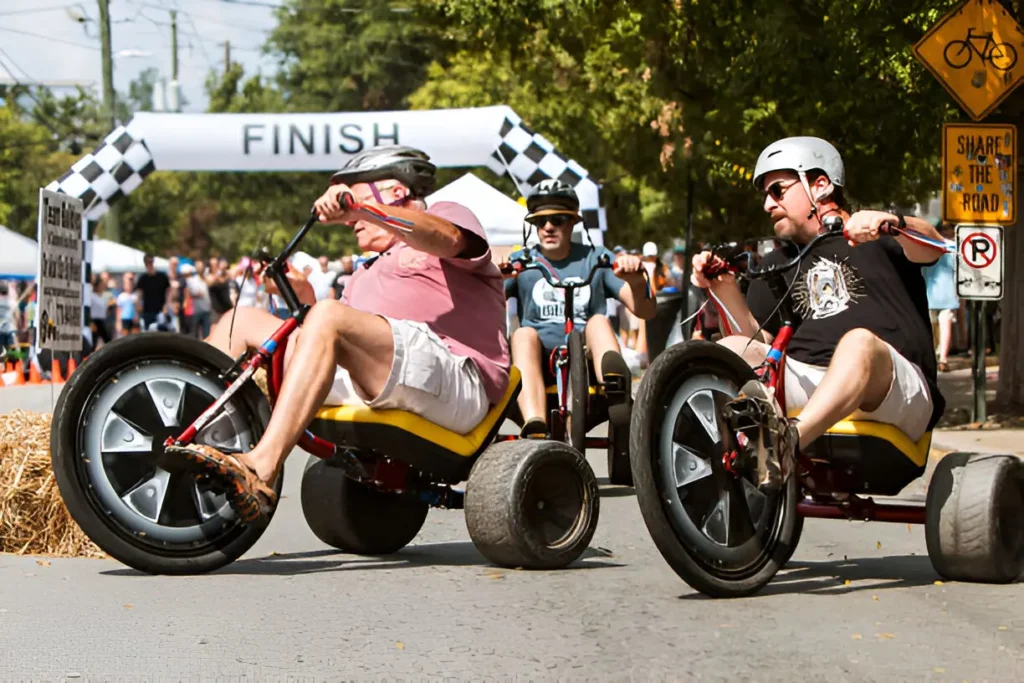More Than Just a Three-Wheeled Curiosity
When you hear the word tricycle, you might picture a child pedaling through the neighborhood. However, the story of the 3 wheel tricycle is much bigger. From its invention over two centuries ago to its role today as an electric bike for adults, the trike has been a vital part of personal mobility history.
Its enduring appeal comes down to two things: stability and accessibility. For those who can’t balance on two wheels—or who simply prefer comfort over speed—the tricycle offers freedom on three wheels. But who actually invented it, and how did we go from simple human-powered designs to modern adult tricycles with advanced electric motors?
Let’s take a deep dive.
The Birth of the Tricycle: 18th-Century Beginnings
The earliest documented trike emerged in 1789 in France, created by inventors Blanchard and Maguier. Unlike the bicycles of that era, which required balance and skill, this three-wheeled vehicle provided stability for people of all ages. Its design used pedals connected directly to the front wheel, making it simple—though not particularly fast.
The invention was revolutionary for two reasons:
- Accessibility – Those unable to ride a two-wheeled bicycle could now enjoy independent travel.
- New Mobility Concept – It demonstrated that vehicle stability could be achieved with a wider wheelbase.
While it didn’t become a mass-market item right away, the tricycle was a crucial step in the evolution of personal transport.
19th-Century Innovations: The Golden Age of Human-Powered Trikes
By the mid-1800s, tricycles had spread across Europe and the UK. Multiple designs appeared:
- Upright models with pedals attached to the front wheel
- Chain-driven designs that improved speed and efficiency
- Recumbent trikes for comfort on long rides
In Victorian England, the tricycle became especially popular among women. At the time, social norms and restrictive clothing made riding a regular bicycle impractical. The 3 wheel tricycle offered a safe, dignified, and comfortable alternative.
During this period, inventors experimented with:
- Frame materials (wood, steel, wrought iron)
- Wheel placement (two in the front vs. two in the back)
- Steering mechanisms (tiller vs. handlebar steering)
By the late 19th century, tricycles were considered a legitimate transportation option alongside bicycles.
The Motorized Tricycle: Early 20th-Century Advancements
The transition from human-powered to motorized adult tricycles began in the late 1800s, paralleling the invention of motorcycles. Inventors fitted small combustion engines onto trikes, creating faster and more versatile vehicles.
Early motor trikes were used for:
- Personal travel in cities and rural areas
- Commercial delivery (e.g., postal services)
- Passenger taxis in certain countries
In Asia, motorized tricycles evolved into key urban transport vehicles, while in Europe they became niche leisure and utility vehicles.
The Arrival of the Electric Adult Tricycle
While electric bikes have been around since the late 19th century, it wasn’t until the 21st century that battery technology made them practical for everyday use. This led to the electric adult tricycle—a modern twist on a classic design.
Key Advantages of Electric Trikes
- Stability: The third wheel makes balancing effortless, especially for seniors.
- Ease of Use: Pedal-assist and throttle systems reduce physical effort.
- Cargo Capacity: Many electric trikes have large rear baskets for groceries or gear.
- Accessibility: Ideal for people with limited mobility or joint issues.
An electric bike for adults with three wheels offers a safer and more comfortable ride for those who might find a regular e-bike intimidating.
Comparing Traditional Tricycles and Electric Tricycles
| Feature | Traditional Tricycle | Electric Adult Tricycle |
| Power Source | Human-powered (pedals) | Battery-powered motor + pedals |
| Speed | Typically 8–15 km/h | 15–25 km/h (or more) |
| Effort Required | Moderate to high | Low (with pedal assist) |
| Range | Depends on rider endurance | 30–80 km per charge |
| Best For | Exercise, short trips | Longer commutes, heavy loads, mobility assistance |
| Cost | Lower initial cost | Higher upfront, lower long-term effort |
| Accessibility | Moderate | High, especially for seniors |
Modern Market Trends
Today, adult tricycles are not just a mobility aid—they’re a growing market segment. Demand has surged among:
- Seniors looking for independence without a car
- Urban commuters who want an eco-friendly alternative
- Small business owners using trikes for deliveries
Electric trikes, in particular, are benefiting from:
- Advances in lithium-ion battery technology
- Growing awareness of sustainable transport
- Government incentives for e-mobility purchases
Why the Trike Still Matters
Even with high-tech two-wheeled e-bikes dominating headlines, the trike has unique advantages:
- Safety – Fewer accidents from tipping over at low speeds
- Utility – Cargo space for goods or passengers
- Comfort – More stable riding posture, especially for those with back or balance issues
Looking to the Future
The evolution of the tricycle is far from over. Future electric adult tricycles may feature:
- Solar charging panels integrated into cargo baskets
- Smart GPS navigation and theft tracking
- Regenerative braking systems to extend battery life
As cities continue to prioritize sustainable transport, we may see 3 wheel tricycles become a common sight alongside electric scooters and bicycles.
Conclusion
From the first 18th-century designs to today’s advanced electric models, the tricycle has remained a symbol of stability, accessibility, and freedom. Whether you’re riding a simple pedal-powered adult tricycle or an electric bike for adults with three wheels, you’re part of a long tradition of practical, human-focused mobility innovation.
The inventor of the tricycle may not have imagined its future, but each stage in its evolution reflects society’s changing needs—and the enduring charm of three wheels.



